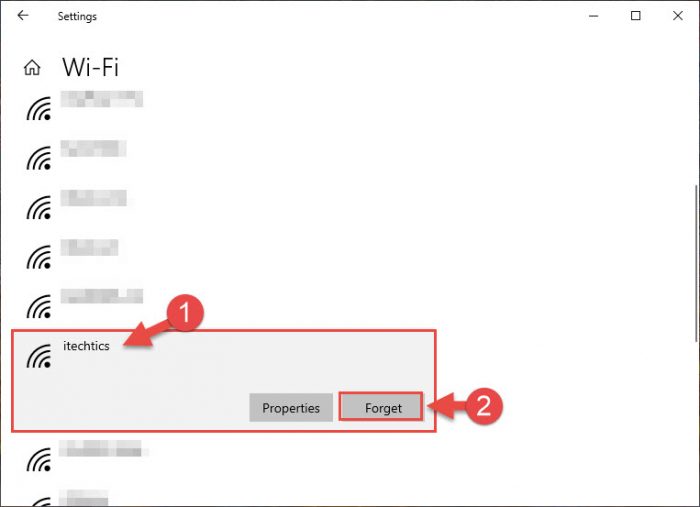Both Windows 10 and 11 save the details of your Wi-Fi connections so that the device can later connect to them, automatically or manually, without repeatedly asking you for your credentials.
However, sometimes this saved data needs to be removed so that you can put in another password in case the password was changed, or you simply do not want your PC to connect to that particular wi-fi even when it is in range. In that case, you must tell your PC to “forget” that particular network profile.
This post discusses several methods you can use to forget one or all of the wi-fi network profiles saved on your Windows computer.
Table of Contents
Quickly Forget Saved Wi-Fi Profile from Quick Access
Thankfully, Windows comes with a Quick Access menu, which you can see on the right side of the taskbar. This menu hosts significant Windows settings that often need to be assessed quickly, such as Bluetooth connections, Focus Assist, Accessibility settings, etc. This also includes the Wi-Fi menu, from which you can choose which network to connect to.
You can also forget a Wi-Fi network using the Quick Access menu. Here is how:
Note: You can only forget Wi-Fi profiles currently in your PC’s range using this method. If you want to forget other profiles that are currently not in the range, refer to the other methods below.
-
Click on the Quick Access menu in the taskbar to expand it, then click on the arrowhead beside the Wi-Fi button to expand the Wi-Fi networks currently in range.
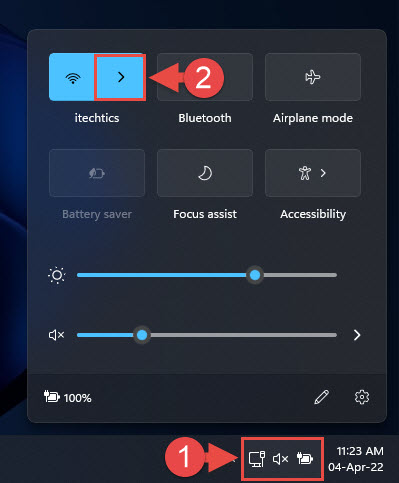
Expand wi-fi network profiles -
Here, right click on the profile you want to get rid of and then click Forget.

Forget network
That is it! You will now see that your Wi-Fi profile is asking you to connect. It will then also ask you for credentials if you attempt to connect to it, confirming that the currently saved profile has been successfully forgotten.
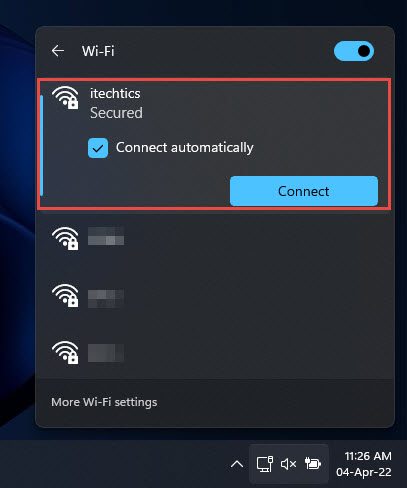
Forget Saved Wi-Fi Profile from Settings
You can also forget your Wi-Fi network profile from the Settings app. The given method below can be applied for both in-range networks, as well as for the network profiles you once connected to, but are currently not available.
-
Navigate to the following:
Settings app >> Network and Internet >> Wi-Fi >> Manage known networks
-
Now perform the following depending upon which Windows you are working on:
The network profile is now removed from the list. If your PC is currently connected to this network, it shall no longer be connected.
Forget Saved Wi-Fi Profile using Command Prompt
If you are a fan of the Windows Command Line Interface (CLI), then you can forget a wi-fi network profile from there too! Here is how:
-
Paste the following cmdlet to obtain a complete list of Wi-Fi network profiles saved on your PC:
netsh wlan show profiles
Show saved wi-fi profiles -
Now use the following cmdlet to forget the profile that you want to while replacing ProfileName.
netsh wlan delete profile ProfileName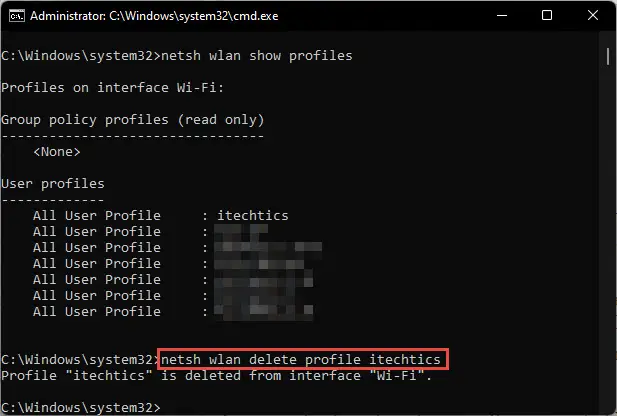
Profile deleted
You shall now see a message confirming that your profile has been deleted.
Delete Saved Wi-Fi Profile using File Explorer
The saved network profiles are locally saved on your computer. Surprisingly, the location where they are saved can be accessed using File Explorer. These profiles are saved at the following location:
C:\ProgramData\Microsoft\Wlansvc\Profiles\Interfaces
You can simply delete a profile XML file from this location to forget it. Here is how:
Note: This process involves restarting your PC for the changes to take effect.
-
Open File Explorer and paste the following into the address bar at the top for quick navigation.
C:\ProgramData\Microsoft\Wlansvc\Profiles\Interfaces

Quick navigation to the Interfaces directory -
Each of the directories you see here represents a network interface on your PC. Open the one with all the Wi-Fi network profiles saved. Note that you will need to open the XML files inside the folder to understand which directory is for the wi-fi network profiles.

Open the XML files -
Once you are sure that you are inside the correct directory, open each XML file and look for the network profile that you want to forget. You will find the name of the profile in the image below:

Network profile XML file -
Once you find the XML file for the wi-fi network profile that you want to forget, simply delete the file.

Delete network profile XML file -
Once deleted, restart your PC for the changes to take effect.
Once it reboots, you will notice that your profile is no longer saved on your computer.
How to Forget All Saved Wi-Fi Network Profiles
Rather than repeating the given steps to delete one network profile at a time, you can also delete all of the saved network profiles altogether. Here are 2 methods to do so:
Reset Network from Settings
You can reset all of your network configurations to remove all saved Wi-Fi network profiles. Here is how:
Note: This method resets the entire network configuration, meaning all configurations will be reset, and everything will be restored to factory-default settings. Furthermore, since your computer also restarts automatically, we suggest that you save all your open data before proceeding further.
-
Navigate to the following:
Settings app >> Network & internet >> Advanced network settings >> Network reset
-
Here, click Reset now to reset all network configurations.

Reset network settings -
When asked for a confirmation, click Yes.
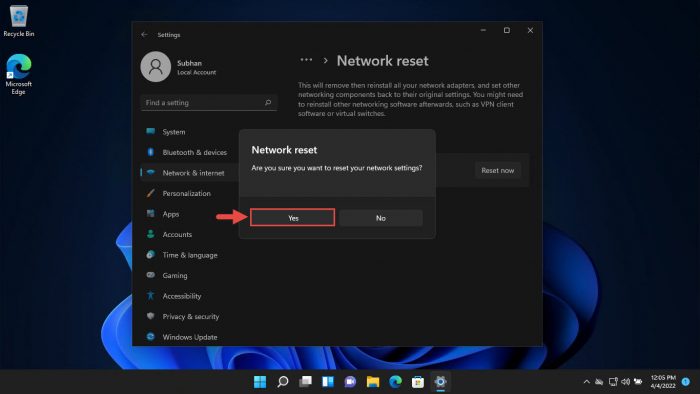
Confirm network reset
The computer will restart after a few seconds. When it does, you will see that all network profiles have been removed. You can now add new profiles from scratch.
Delete all Wi-Fi Network Profiles using Command Prompt
You can also delete all Wi-Fi profiles on your computer with a simple cmdlet in the Command Prompt. Here is how:
-
Now run the following command to delete all Wi-Fi network profiles:
netsh wlan delete profile *
All Wi-Fi profiles deleted from Command Prompt The Command Prompt will then list all the profiles that have been “forgotten” successfully.
Closing Words
Network profiles that are saved on your computer and are no longer in use often cause hindrances when connecting to other networks with the same name. For example, Internet Service Providers (ISPs) often give the same name to the SSIDs provided to their clients, but often have different passwords.
In that case, your PC will show that the password for the said network has been changed or is invalid. You will then need to provide an updated password each time you want to connect to 2 different networks with the same name.
To do this, you must first forget the old network profile using any of the given methods above, and then connect to the new network in your PC’s range using the updated credentials.


